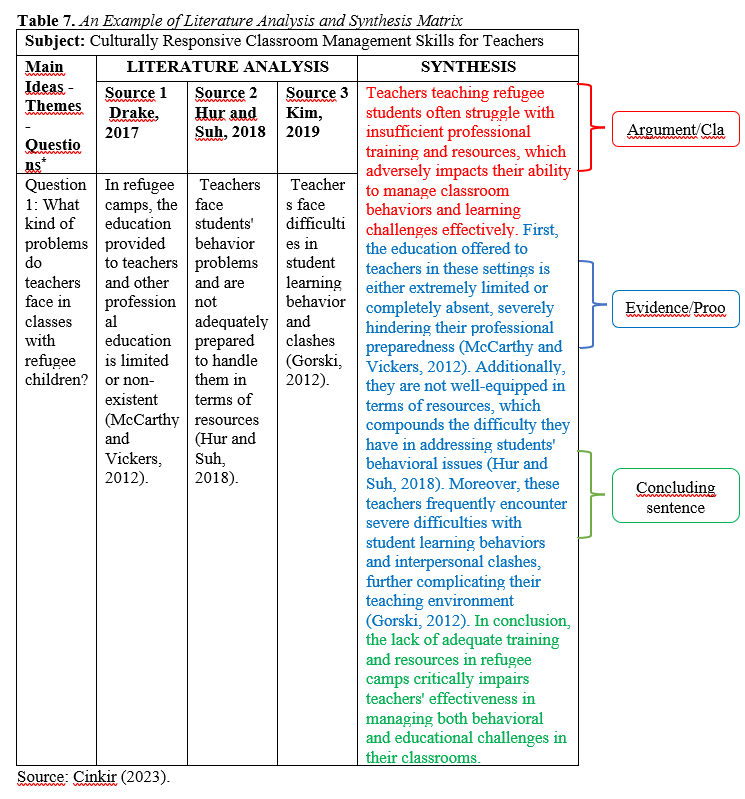Information

The synthesis and analysis of the literature go beyond mere summarization; they aim to make sense of the existing body of work and to integrate it into a coherent narrative. This narrative should set the stage for your study, allowing you to situate your research questions and hypotheses within a clearly defined context (Fink, 2014; Snyder, 2019). Thus, “discourse synthesis” or “writing from the sources” can defined as:

* Main Ideas Themes-Questions can be expanded according to the topic and scope…
Definition
For the topic at hand, the synthesis would bring together findings on the systemic challenges in publishing, such as peer-review timelines, with more individual-level challenges, such as language barriers and lack of mentorship.
Literature analysis and synthesis goes beyond summarizing existing research, aiming to make sense of these studies and integrate them into a coherent story. This process provides a platform to place research questions and hypotheses in a clear context. When synthesizing, authors combine evidence from different sources, compare it, and draw conclusions while incorporating not only what others say but also their own interpretations. This process allows readers to understand how the individual pieces fit together and provides a broader understanding.